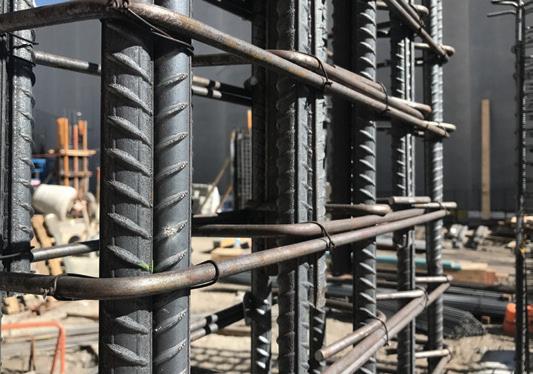
2 minute read
SEVEN TRENDS SHAPING THE FUTURE AUSTRALIAN CONSTRUCTION MARKET
SEVEN TRENDS SHAPING THE FUTURE
AUSTRALIAN CONSTRUCTION MARKET
Advertisement
Total construction activity in Australia has struggled since 2017. Forecasters predict that most of the market will remain flat or post small gains in the years ahead. Still, there are bright spots on the horizon as highlighted in an August 2019 report from Master Builders Australia.

CIVIL PROJECTS WILL LEAD THE WAY
The civil construction sector is expected to be ‘the biggest five years in a row by the Global Real Estate Sustainability
winner’ over the next several years, thanks largely to the ramping up of government-led transport infrastructure projects. Forecasters predict the best bets coming in civil are in oil and gas, rail construction and roads, while electric, recreation and telecommunications appear “to have peaked and are beginning to contract”, the report said.
RESIDENTIAL GROWTH IS STILL STRUGGLING
Due to a raft of circumstances such as lower birth rates, declining migration and an overbuilding of housing before elements and even entire homes a significant part of their
2017, residential growth has flattened in Australia and is expected to decline in the coming years, the report said. Expert estimates put residential projects at about 168,000 for 2020, which is 28 per cent lower than the peak in 2017.
COMMERCIAL GROWTH WILL STRUGGLE, BUT NOT IN EVERY SECTOR
Commercial growth has been a ‘star performer’ over the last couple of years, however, such above-average growth is expected to fall back to normal levels in the years ahead. Office buildings, education and accommodation will contract and schedules. Contractors will be well served to implement
significantly, and although transportation, health and retail have more favourable projections, they aren’t enough to overcome the general slowdown. Expect that the drop in commercial growth will also lead to more spaces originally designed for offices to transition to other uses as people continue to switch to off-site or shared workspaces.
FEWER NEW HOMES, BUT MORE RENOVATIONS
If you’re in the Australian home renovation business, there’s good news – the ultra-low interest rates for loans are expected to help many Australians open up their floorplans or redo their MAJOR CONSTRUCTION FIRMS ARE INCREASINGLY ‘GREEN’
The largest construction firms in Australia – those handling the country’s big projects – are ‘greening’ their practices. For example, CPB Contractors has made environmental and sustainable solutions part of its approach to every project. Lendlease, the multinational Australian builder and property manager, has been recognised Benchmark (GRESB) as the world’s most sustainable property fund.
MODULAR AND PREFAB WILL INCREASE MARKET SHARE
Most Western countries like Australia consider modular or prefabricated construction cheap or tasteless. Asian and Nordic countries, however, have long made prefabricated market. In recent years, prefabricated and modular homes have grown more popular for their cost savings and diminished environmental impact. And while the market for prefabs is only about 3.5 per cent in Australia, that is expected to double in the coming years as quality and design improves.
TECHNOLOGY IS SPEEDING UP THE BUSINESS
It might feel like construction sites are increasingly out of science fiction, with GPS-enabled equipment, wearable technologies, drones and digital documents such as blueprints and checklists. The result of this is that work happens faster, with better organisation, and with much tighter supply lines kitchens. This is particularly true for houses built in the late 1980s.
new technologies to keep their competitive edge – or at least understand and have a flexible attitude towards technology as the larger firms lead the way.










